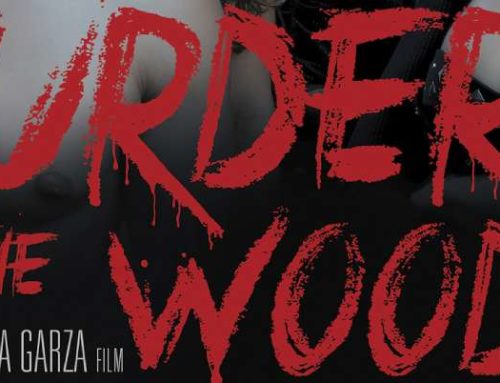Today I’m bringing you our second edition of Disney vs Grimm, and we are focusing on the ever popular Cinderella. A tale of wonder, magic, and love! The original was just as wonderful as the Disney version, though it had its darker moments.
As usual we all know the story… or do we? The Disney classic focuses on a lovely young woman, the death of her mother, her father remarries then passes himself, and her step mother being a vicious woman with two less than pleasant daughters who then treat the young woman as a slave in her own house. The conclusion we also know by rote: a fairy godmother, a glass slipper and a prince. But let’s pull out our glass slippers and have a better look at the tale.

image Source: Disney Wiki
I found an awesome site that actually had the transcript of the original Cinderella and I think it’s much better than any Disney Version, but I’ll let you decide. If you would like to follow the link above and read it yourself, it would be awesome to hear your thoughts.
Both versions start off much the same… a young girl’s mother passes away but before she passes she tells her daughter: “Dear child, remain pious and good, and then our dear God will always protect you, and I will look down on you from heaven and be near you.” Now this statement has changed briefly with each telling (some are more religious than others, some base more on Catholic sentiment and others more on magic), but the general statement is the same. Be kind and good… and you will be protected. For some reason the Disney version simply eludes to the fact that she was a loving and caring mother, but she never gets to tell her the major sentiment of the whole tale. Be kind and be good. Instead, it is more viewed that Cinderella is just kind and gentle spirited by nature, and that it’s something she may have gotten from her mother’s influence before she passed, when Cinderella was only 10. The age in the Disney version is referred to but there is no mention of age in the Grimm tale.
The first major difference I ran across actually surprised me. In most versions the father remarries after a few years (when he feels Cinderella needs a mother figure. This is often thought of when she’s around the age of puberty, so in her teens), but he still loves Ella the most. This fuels some of the hatred the Stepmother has towards Ella, being that she seems to be good and favoured by her father. In the original, however, you can see that this is based on a different time altogether (Originally written in 1812 and revised in 1857 – I’m using the revised version for this comparison). The father remarries a year after his wife passes, and is still alive during the brutality of the Stepsisters. He even states to the prince near the end of the tale “No,” said the man. “There is only a deformed little Cinderella from my first wife, but she cannot possibly be the bride.”
After the passing of her mother, Cinderella is no longer welcome as a family member to the father or the household. This is why she became the Cinder girl. The Disney version allows Cinderella to have a room in the top of the house (so they are a little kinder than the original family) but the Grimm’s version allows her to have no bed. Instead she must sleep in the kitchen, as the maid, in front of the hearth where it is warmest. This causes her clothes and most of her to be blackened with soot and cinder. So the nasty Stepsisters, in both versions, give her the nickname of Cinderella.
One of the biggest differences I found between Disney and the original is that there is no Fairy Godmother.
I’ll give you a second to allow that to sink in.
Yup, I’ve known a few variations but the true telling has Cinderella going to her mother’s grave every day. One time when her father is away on a trip she asks him to bring back the first branch that brushes his hat. He does and when she is given it she plants the twig at her mother’s grave. This twig grows into a Hazel Bush where when Cinderella goes to the grave and weeps, a white bird throws down to Cinderella what she wished for. This creates a mystical link between her mother and Cinderella. I feel this is more fantastical than having a magical lady in blue popping up, but instead some force that communes with the birds is there and helps her.
I’m not really sure why Disney would have created a Fairy Godmother instead of keeping to the tree with birds responding to Cinderella. But then again it’s probably because it’s more fun to have singing mice and a few Bibbidy Bobbidy Boo’s. Also the Fairy Godmother and the transformation scene is much more magical in the Disney version than in the original.
In the original there is no ball. Instead there is a three day festival where all the young ladies of the kingdom are invited. Cinderella is not allowed to go even though her Stepmother put multiple impossible tasks before her (mainly they dropped a bowl of lentils in the ashe and had her pick them out), which were all completed by Cinderella with help from the birds (If you’ve seen Into the Woods some of it is very similar). So Cinderella goes each night, after her Stepmother and Stepsisters leave the house, and cries at the tree of her mother’s grave. The white bird then throws down to her a new beautiful dress each night. In the 1857 version there is no mention of returning by midnight, but in the 1812 version the birds tell her that she needs to leave by midnight or the magic ends. What’s neat in the 1857 version is that she simply walks to the festival (which wouldn’t have been unheard of at the time) but the older version actually has a magical coach show up at her door each night.

image source: The Silver Jar
There’s an obvious lessening of Magic in the 1857 version. They also reference God a little more in the 1857 version. What I think is neat is that both versions have her putting on the dress herself. That it either disappears (in the earliest) to her old clothes at midnight, or in the 1857 version she returns the dress to the tree and the birds, who then take it away.
When she arrives at the palace things go fairly similar, instead it’s over 3 days. Each day she runs away from the prince and each day he goes looking for her. If we stick the the 1857 version of the Grimm tale, Cinderella decides she’s tired and wishes to leave. The Prince insists on walking her home, however each night she evades him. The first night she goes through a Chicken Coop. The Prince then runs into her father who takes an axe to the coop but Cinderella is not there. The second night she climbs a tree. The Prince then runs into her father again (who each time thinks “Could it be Cinderella”… seriously!), who then cuts down the tree but she is already gone. The third night the Prince has pitch put on the steps. Her slipper, which is not glass in this version, instead “It was small and dainty, and of pure gold.” is found by the Prince. He knows roughly where she must live (because he’s walked her part of the way to her house two nights in a row and ran into the same man at the same place… duh) and goes to the house of the man who helped him (Cinderella’s Father) and asks to fit his daughters. I rather like this part of the original rendition. There’s something less awkward and more intelligent about the fact that he only went to one house. He didn’t search the WHOLE kingdom for a lady to fit a slipper… but then again there are lot of versions (including the Disney one) that state the slipper is magical and will not let anyone fit it other than Cinderella.
The best part comes at the end. The prince gives the shoe to one sister, who obviously doesn’t fit it, however the Stepmother sees how she may be able to have a daughter that is a Queen and tells her to cut off her toe. The slipper then fits but the birds warn the Prince while he is riding away with her:
Rook di goo, rook di goo!
There’s blood in the shoe.
The shoe is too tight,
This bride is not right!
(Is it just me or does the rhyme remind you of something from an Oompa Loompa…. but I digress).
He returns the false bride to her house and asks for another young lady. The second sister then tries it (who also doesn’t fit it) and the Stepmother tells her to cut off her heel. Again we get the lovely rhyme above.
Finally we get to the part that’s similar in all tellings! Cinderella gets a chance to try it on (at great insistence that she does not by the Stepmother), but before she comes out she washes her face and hands. Upon seeing her the Prince recognizes her beauty and the slipper is a perfect fit. They then get married. I was SO happy that in the original version he RECOGNIZES his bride BEFORE trying on the slipper. The trying of the slipper becomes a simple trivial thing. This guy who danced with her for 3 whole nights actually recognizes her!
Anywho back to the ending.
But it doesn’t end there… oh no, you can’t have a Grimm tale without something, well, rather grim happening to the Sisters. At the wedding the sisters attempt to regain Cinderella’s favour (the two white pigeons that warned the prince perch on Cinderella’s shoulder for the event):
When the bridal couple walked into the church, the older sister walked on their right side and the younger on their left side, and the pigeons pecked out one eye from each of them. Afterwards, as they came out of the church, the older one was on the left side, and the younger one on the right side, and then the pigeons pecked out the other eye from each of them. And thus, for their wickedness and falsehood, they were punished with blindness as long as they lived.
All I have to say is… Seriously! If you just got one of your eyes PECKED OUT when walking with your stepsister, would you really try it again on your way out of the church? Wouldn’t you be writhing in pain from just having an eye pecked out? Obviously these women are gluttons for punishment.
I don’t know about you, but even though the Grimm tale is missing a Fairy Godmother, some mice and a carriage, I rather like the addition of the sisters being forced to mutilate themselves by their mother and then going blind due to their own greed. It’s a rather harsh lesson but there’s something to be said about why these tales were written. They were never written as meer trivial bedtime stories. No, they were warnings…. be kind and good!
So which do you like better?? Or are you like me and would love to see a version of it done somewhere in between? Maybe a little more modern but still with some of the darker bits?






This is great! I first learned about the darker non-Disney version of Cinderella from Into the Woods. I think I still prefer the Disney version only because I love musicals.